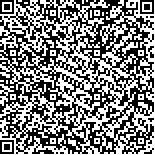| 摘要: |
| [摘要] 目的 探讨屈光不正儿童在戴镜前后的视力变化,评估单纯屈光矫正在学龄前儿童视力改善中的临床作用。方法 回顾性分析112例(224眼)2~7岁的屈光不正儿童,给予合理的屈光矫正后,随访3个月、6个月后戴镜视力的变化情况。结果 按年龄分组:在戴镜3个月后,3个年龄组间戴镜视力提升有差异(χ2=29.391,P=0.000),其中3~5岁提升最明显,5~7岁年龄组其次,<3岁年龄组最差;戴镜半年后各年龄组间戴镜视力的提升差异无统计学意义(χ2=8.210,P=0.084)。按屈光状态分组:在屈光矫正半年后,各组间的戴镜视力提升差异有统计学意义(χ2=23.517,P=0.003),其中单纯远视或远视散光的儿童戴镜视力改善最好,其次分别为复性远视散光组、混合散光组、单纯近视或近视散光儿童,复性近视散光儿童效果最差。结论 单纯屈光矫正可提升学龄前儿童的戴镜视力,其中屈光矫正在3~5岁年龄段效果最好,单纯远视或远视散光眼的戴镜视力改善最明显,并且部分儿童戴镜后视力可达同龄儿童的正常水平。 |
| 关键词: 屈光不正 最佳戴镜视力 弱视 |
| DOI:10.3969/j.issn.1674-3806.2016.06.03 |
| 分类号:R 77 |
| 基金项目:广西卫计委科研课题(编号:Z2011453,Z2014200);广西医疗卫生重点科研课题(编号:重2012111) |
|
| The effect of refractive correction alone on preschool childrens′ visual improvement |
|
LAN Fang-fang, ZHAO Wu-xiao, GAN Lu
|
|
Center for Optometry and Visual Science, the People′s Hospital of Guangxi Zhuang Autonomous Region, Nanning 530021, China
|
| Abstract: |
| [Abstract] Objective To investigate the clinical effect of refractive correction alone on preschool childrens′ vision.Methods One hundred and twelve ametropic children(224 eyes) aged from 2 to 7, received reasonable refractive correction and their clinical data were retrospectively analyzed. The changes of visual acuity in each case were recorded before and after the optical treatment at the end of three and six months, and statistical analysis was perfomed with SPSS13.0 soft ware.Results There were significant differences in visual improvement among the three different age groups three months after the optical treatment(χ2=29.391, P=0.000). The 3 to 5 age group had the most remarkable improvement, followed by the 5 to 7 age group and younger than 3-year-old group. However, there were no significant differences in visual improvement among the three age groups six months after the optical treatment(χ2=8.210, P=0.084). When divided into different groups according to different refractive status, the children showed the best improvement of visual acuity six months after the optical treatment in the simple hyperopia or hyperopic astigmatism group, followed by the compound hyperopic astigmatism group, the mix astigmatism group, the simple myopic or myopic astigmatism group, and the compound myopic astigmatism group. There were significant differences in visual improvement among the groups(χ2=23.517, P=0.003).Conclusion Refractive correction alone improves preschool childrens′ corrected visual acuity, especially for those with simple hyperopia or hyperopic astigmatism and for those aged from 3 to 5 years.Some ametropic children may achieve normal visual acuity after the optical treatment. |
| Key words: Ametropia Visual acuity Amblyopia |

